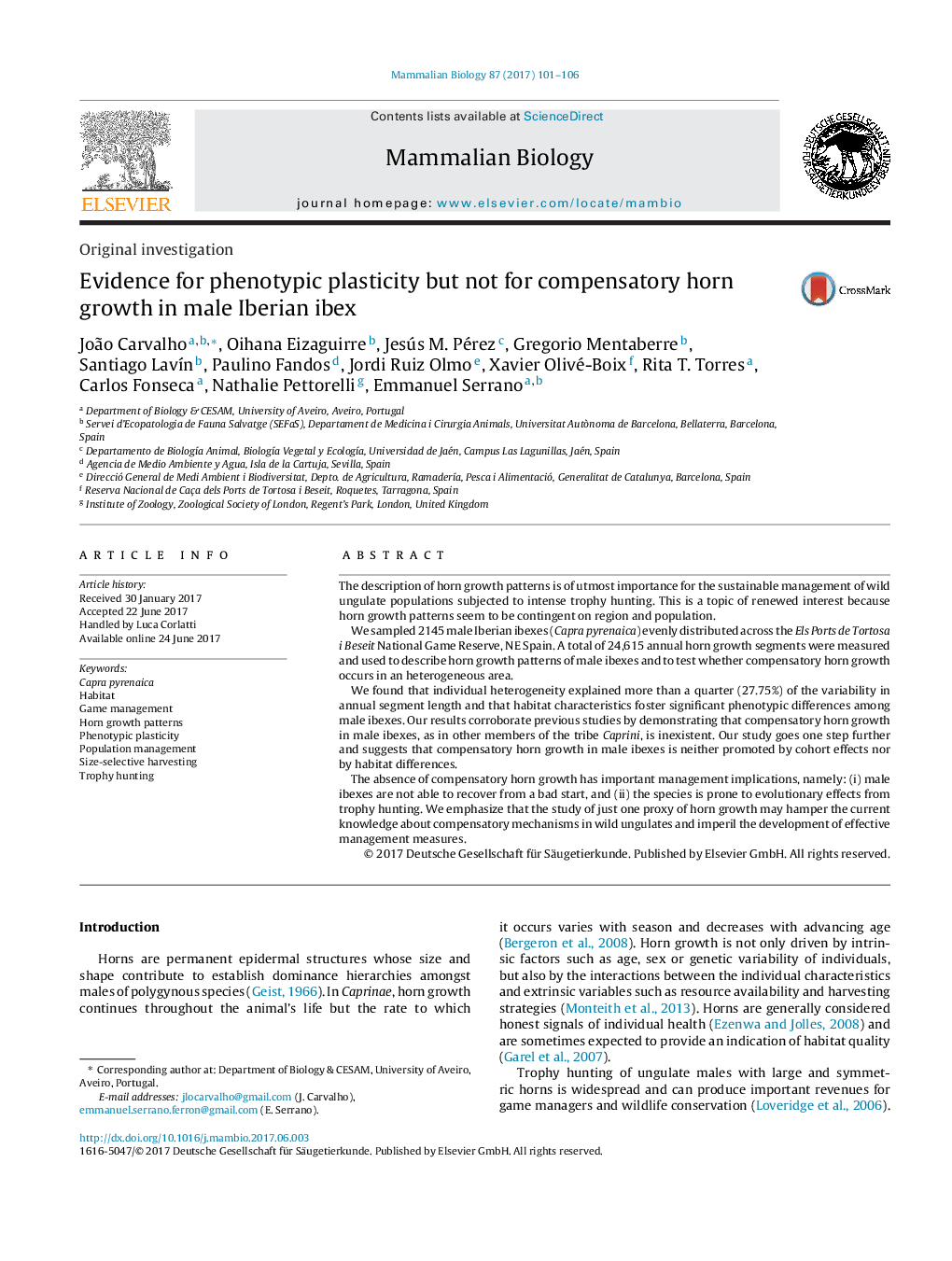| Article ID | Journal | Published Year | Pages | File Type |
|---|---|---|---|---|
| 5533710 | Mammalian Biology - Zeitschrift für Säugetierkunde | 2017 | 6 Pages |
The description of horn growth patterns is of utmost importance for the sustainable management of wild ungulate populations subjected to intense trophy hunting. This is a topic of renewed interest because horn growth patterns seem to be contingent on region and population.We sampled 2145 male Iberian ibexes (Capra pyrenaica) evenly distributed across the Els Ports de Tortosa i Beseit National Game Reserve, NE Spain. A total of 24,615 annual horn growth segments were measured and used to describe horn growth patterns of male ibexes and to test whether compensatory horn growth occurs in an heterogeneous area.We found that individual heterogeneity explained more than a quarter (27.75%) of the variability in annual segment length and that habitat characteristics foster significant phenotypic differences among male ibexes. Our results corroborate previous studies by demonstrating that compensatory horn growth in male ibexes, as in other members of the tribe Caprini, is inexistent. Our study goes one step further and suggests that compensatory horn growth in male ibexes is neither promoted by cohort effects nor by habitat differences.The absence of compensatory horn growth has important management implications, namely: (i) male ibexes are not able to recover from a bad start, and (ii) the species is prone to evolutionary effects from trophy hunting. We emphasize that the study of just one proxy of horn growth may hamper the current knowledge about compensatory mechanisms in wild ungulates and imperil the development of effective management measures.
